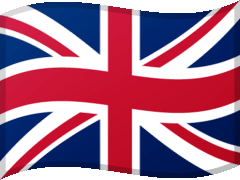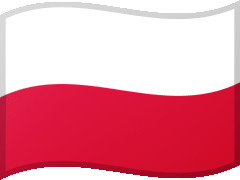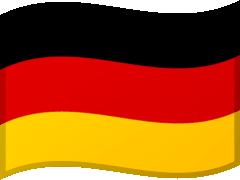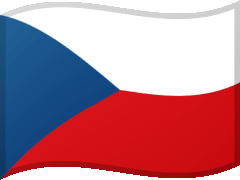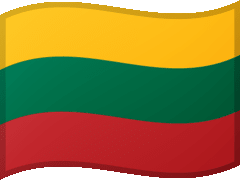Poland entered the year 1990 with a new name for the country and a new state emblem - the historical name 'Rzeczpospolita Polska' [Republic of Poland] and the crowned eagle which symbolised independence, were reintroduced. This was the result of many years of struggle by the anti-Communist opposition, in which the leading role was played by the Independent Self-Governed Trade Union “Solidarność” [Solidarity], established in 1980. Despite the proclamation the martial law and the banning of movement, Solidarity survived as an underground organisation. Eventually, the Communist authorities decided to enter into dialogue with a certain part of the opposition. As a result of these roundtable talks in the year 1989, partially free elections were held, paving the way to further changes, including the formation of the non-Communist government under Prime Minister Tadeusz Mazowiecki.
At the threshold of 1990, not only symbolic changes took effect. The process of deep economic reforms was initiated. It went down in history as “Balcerowicz's plan” after the name of the deputy prime minister responsible for preparing the package of relevant legal acts. It contributed, among other things, to the stabilisation of the Polish currency and reduction in inflation. It also sped up the transition towards a market economy. In the long run, it helped to lay a healthy foundation for the economy, however, in the first few years, it was mainly associated with a decline in living standards, bankruptcies among state enterprises, a rapid rise in unemployment and all the related social problems. In the Summer of 1990, a law was passed on the privatisation of state enterprises; in most cases, this was done through their liquidation.
The most spectacular event at the beginning of 1990 was the eleventh, and as it later turned out, last congress of the Polish United Workers’ Party. The party, which had held dictatorial power in communist Poland for decades, had plunged into a deep crisis in the autumn of 1989. The statements on the party's 'leading role' in the state were removed from the Constitution, thousands of people handed in their party membership cards and further structures were dissolved. In this situation, a decision on the party’s liquidation was taken, which was symbolised by the words of the last 1st Secretary of the Central Committee (and until recently Prime Minister) Mieczysław F. Rakowski: ”Take the banner out!”. The Polish United Workers’ Party was replaced by a new party – the Social Democracy Party of Poland. It was hoped that the change in name would help in regaining social support. And this indeed happened – in the Autumn of 1993, as a consequence of disappointment with the difficult reforms, post-Communists returned to power.
Meanwhile, the Warsaw Pact and the Council for Mutual Economic Assistance still existed, having been dissolved only in 1991. It was not until the second half of the year that talks began about the withdrawal of Soviet troops from Poland. Poland was, however, increasingly bold in setting out on the road towards a unifying Europe, from where aid was beginning to flow in the form of a special PHARE fund. In March 1990, Prime Minister Mazowiecki gave an important speech on the forum of the Council of Europe, declaring that ”we have quite a lot to offer to Europe”. Above all, he meant that countries liberating themselves from Soviet control could bring a renewed faith in the European values, for which they had struggled against communism, into the integration process. In international politics, the government faced the challenge of the announced German reunification - there were fears that the Polish western border could be called into question.
However, domestically, Mazowiecki’s government was more and more frequently criticised for the excessively slow pace of political reforms when compared to other countries. Until July 1990, the government included communist ministers of interior affairs and national defence. It was only in April that censorship was abolished, and soon after, the Security Service was dissolved and replaced by the Office for State Protection. It was composed however, of many former functionaries of the Communist security apparatus. Similarly, the military services were not reformed at all, only their names were changed. For years these issues raised controversy, just like, for the most part, unsuccessful attempts at punishing Communist criminals. Justice and truth were triumphant in the symbolic sphere – in April 1990, the Soviet Union, after decades of lies, officially confirmed its responsibility for the Katyn massacre.
The first free elections to the local governments held in May 1990 were an important turning point. The local government gained broad powers, most of which have been put to good use. The appearance of cities and rural areas has changed and the local government reform is commonly regarded as one of the most successful ones in the history of the Polish transformation period.
The political scene also changed rapidly; new parties were formed. Poles would gradually get accustomed to new, often harsh political disputes. Emotions were ignited, for instance, by the decision on teaching religion in schools. Gradually, the main subject of debates became the slogan of “acceleration” of changes, thrown in for good measure by the camp centred around the leader of Solidarity - Lech Wałęsa. The problem was that the office of President, with its wide-ranging powers, was held by the last communist dictator, Wojciech Jaruzelski, and there were still many years to go before his term ended. Ultimately, Jaruzelski, deprived of the will to fight, resigned from his office and this allowed for the holding of the first common presidential elections.
Besides Walesa, Prime Minister Mazowiecki decided to run for election, defending his vision of cautious change with the slogan 'hurry up slowly'. It seemed that he would be the main opponent of the “Solidarity” leader. Unexpectedly, however, an emigrant, previously unknown to any one, Stanisław Tymiński made it to the second round. This showed the extent of the fatigue and disillusionment of the Polish people, and prompted the Prime Minister to resign.
In the end, Wałęsa won in the second round, becoming president in December 1990. At the same time, the Polish authorities in exile which had existed continuously since 1939 ceased their activities. At the Royal Castle in Warsaw, the last president in exile, Ryszard Kaczorowski, ceremonially presented the insignia of the Republic of Poland to Lech Wałęsa. A certain chapter in Polish history was closing and a new one was opening, and its milestones were the first free parliamentary elections (1991), the withdrawal of Russian troops (1993), accession to NATO (1999) and the European Union (2004).
